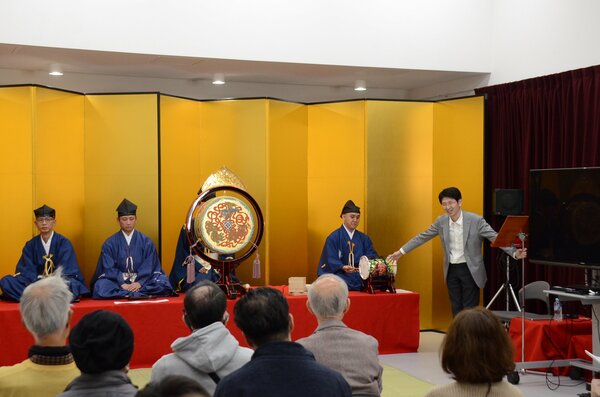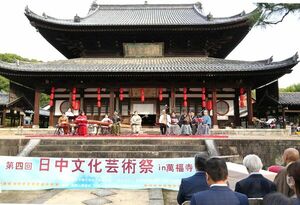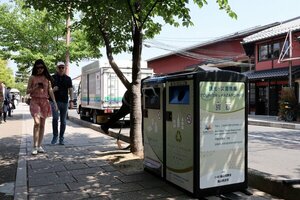On January 21, 2024, a public lecture was held at Kyoto City University of Arts in Shimogyo Ward, Kyoto City, to examine the theory that ''old gagaku had a fast performance tempo'' from the perspective of percussion instruments. Approximately 40 participating citizens listened to the results of the research and enjoyed the performance of the restored rhythmic music.

British musicologist Laurence Picken proposes the theory that the original tempo of gagaku was four to eight times faster than it is now, and that it "elongated" over a thousand years to become the current performance style.
The lecturer was Chisato Nemoto, special researcher at the Japanese Traditional Music Research Center, Kyoto City University of Arts. He deciphered the method of playing percussion instruments from sheet music from the early Kamakura period, and explained, ''I logically clarified the length of each beat and the overall performance tempo.'' Afterwards, players of three types of percussion instruments (kakko, shoko, and taiko gong) and wind instruments performed the six restored songs at a fast tempo, including ''Etenraku,'' ''Senshuraku,'' and ''Chogeishi.''































